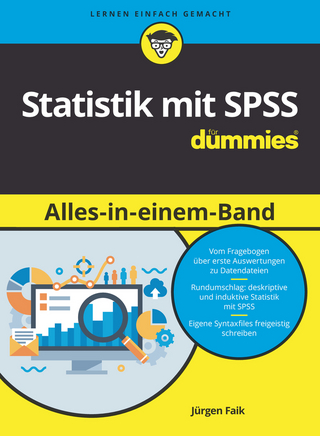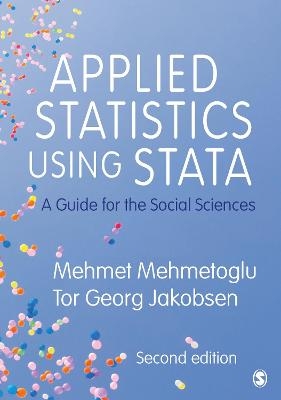
IBM SPSS Statistics 26 Step by Step
Routledge (Verlag)
978-0-367-17435-4 (ISBN)
- Titel ist leider vergriffen;
keine Neuauflage - Artikel merken
IBM SPSS Statistics 26 Step by Step: A Simple Guide and Reference, sixteenth edition, takes a straightforward, step-by-step approach that makes SPSS software clear to beginners and experienced researchers alike. Extensive use of four-color screen shots, clear writing, and step-by-step boxes guide readers through the program. Output for each procedure is explained and illustrated, and every output term is defined. Exercises at the end of each chapter support students by providing additional opportunities to practice using SPSS.
This book covers the basics of statistical analysis and addresses more advanced topics such as multi-dimensional scaling, factor analysis, discriminant analysis, measures of internal consistency, MANOVA (between- and within-subjects), cluster analysis, Log-linear models, logistic regression and a chapter describing residuals. Back matter includes a description of data files used in exercises, an exhaustive glossary, suggestions for further reading and a comprehensive index.
IMB SPSS Statistics 26 Step by Step is distributed in 85 countries, has been an academic best seller through most of the earlier editions, and has proved invaluable aid to thousands of researchers and students.
New to this edition:
Screenshots, explanations, and step-by-step boxes have been fully updated to reflect SPSS 26
How to handle missing data has been revised and expanded and now includes a detailed explanation of how to create regression equations to replace missing data
More explicit coverage of how to report APA style statistics; this primarily shows up in the Output sections of Chapters 6 through 16, though changes have been made throughout the text.
Darren George is a Professor of Psychology at Burman University whose research focuses on intimate relationships and optimal performance. He teaches classes in research methodology, statistics, personality/social psychology, and sport and performance psychology. Paul Mallery is a Professor of Psychology at La Sierra University whose research focuses on the intersection of religion and prejudice. He teaches classes is research methodology, statistics, social psychology, and political psychology.
Preface
1. An Overview of IBM® SPSS® Statistics
2A. IBM SPSS Statistics Processes for PC
2B. IBM SPSS Statistics Processes for Mac
3. Creating and Editing a Data File
4. Managing Data
5. Graphs and Charts: Creating and Editing
6. Frequencies
7. Descriptive Statistics
8. Crosstabulation and χ2 Analyses
9. The Means Procedure
10. Bivariate Correlation
11. The t Test Procedure
12. The One-Way ANOVA Procedure
13. General Linear Model: Two-Way ANOVA
14. General Linear Model: Three-Way ANOVA
15. Simple Linear Regression
16. Multiple Regression Analysis
17. Nonparametric Procedures
18. Reliability Analysis
19. Multidimensional Scaling
20. Factor Analysis
21. Cluster Analysis
22. Discriminant Analysis
23. General Linear Models: MANOVA and MANCOVA
24. G.L.M.: Repeated-Measures MANOVA
25. Logistic Regression
26. Hierarchical Log-Linear Models
27. Nonhierarchical Log-Linear Models
28. Residuals: Analyzing Left-Over Variance
Data Files
Glossary
References
Credits
Index
| Erscheinungsdatum | 05.12.2019 |
|---|---|
| Verlagsort | London |
| Sprache | englisch |
| Maße | 210 x 280 mm |
| Gewicht | 1070 g |
| Themenwelt | Geisteswissenschaften ► Psychologie |
| Mathematik / Informatik ► Mathematik ► Computerprogramme / Computeralgebra | |
| Mathematik / Informatik ► Mathematik ► Statistik | |
| ISBN-10 | 0-367-17435-9 / 0367174359 |
| ISBN-13 | 978-0-367-17435-4 / 9780367174354 |
| Zustand | Neuware |
| Informationen gemäß Produktsicherheitsverordnung (GPSR) | |
| Haben Sie eine Frage zum Produkt? |
aus dem Bereich


